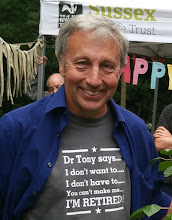This question has been asked and answered many times over, most recently in a report done in 2009. http://www.forestry.gov.uk/forestry/infd-7rufme
Not long ago perhaps, but a lot is changing. The “Lawton review” has made strong recommendations about how to develop a coherent ecological network and the National Ecosystem Assessment has looked at how we can better value the benefits we get from nature. Both of these are key drivers in the forthcoming Natural Environment White Paper. Any future for the public estate must fit within the concept of restoring the natural environment that flows from these documents.
If you want to read some of my thoughts on these please take a look at my blog posts around September last year starting at:
Against this background, perhaps it is relevant to ask the question again. If we did then I suggest that the purpose of the estate should go along the following lines:
- The purpose of the public estate is to contribute to realising the full potential of England’s current and future ecological network, so that it provides the ecosystem services on which we depend.
(If you don’t know what I mean by ecosystem services then again please look back to my blogs in 2010)
In practice this is perhaps just a current way of describing multi-purpose forestry, which FC tries to do anyway. But it is perhaps a better recognition that forests deliver a lot more than just timber.
The problem is that this could be the policy objective for all forest management (indeed all land management) – public and private. So the public forest estate must have a special role, something complementary to the private sector.
In my mind this specialness is that the public estate should deliver ecosystem services that are not easily valued in traditional economic terms and so not easily delivered by the private sector.
We can work out the price of timber, but it is harder to value soil formation, nutrient cycling, wild species, climate amelioration or ecological interactions. Other services we get include recreation, access, spiritual enrichment, wildlife and the appreciation of wildlife. We know these are essential, but we hope nature provides them for free. These ecosystem services are our public benefits and do have a value (when the sums are done the value can be 100 times more than the cost of conservation) and the public estate should be there to deliver them as its primary role.
Outside the public estate, management approaches that support these services might be seen as a “cost” to be supported by providing “grants”. A public forest estate, however, should support these as its normal way of operating. So, as well as producing timber, the estate should use (and demonstrate) management approaches that also deliver all other services. It would therefore be an exemplar of multi-purpose land management. One consequence will be that, as so many other benefits are recognised, there will be significant areas of land where other ecosystem services are emphasised and timber production will be far less of an objective.
In order to do this the public forest estate will need to be large and diverse, covering the range of ecological conditions and management situations found in England. It will also need to be transparent and accountable. It will need to be in the places where it can best deliver aspects of public benefit that are less easily delivered by private and charitable sectors. This could mean re-configuring the current public estate, maybe selling some areas but purchasing others. In order to achieve its purpose, it is likely that the net size (i.e. after selling some areas and acquiring others) will be larger than it is at present, not smaller.
This is perhaps my long-winded way of supporting the position statement articulated by the Save Our Woods campaign
http://saveourwoods.co.uk/news/sow-briefing-for-westminster-debate-on-the-future-of-the-fc/
What’s more this seems to be what everybody wants – a bigger, more effective public estate.
Maybe this will be difficult to achieve in the current economic climate but plans for a public estate should be long term. At least we should hold on to a good thing while we’ve got it. A more expansive agenda could then follow when conditions permit.

No comments:
Post a Comment